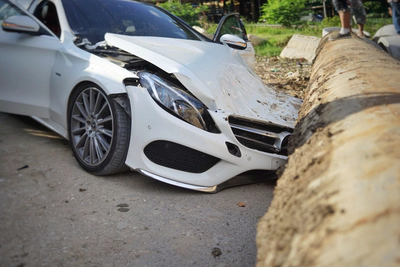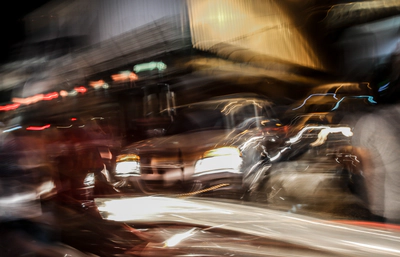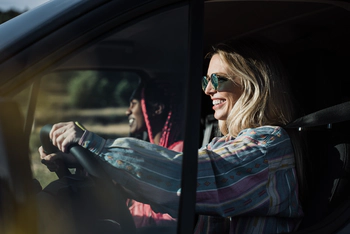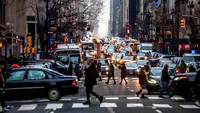Alcohol plus Marijuana Is a Highly Dangerous Combination for Drivers
What drivers—especially young drivers—need to know about the combined effects of these two very common drugs.

Photo by ferdyboy/Shutterstock.com
In February 2024, Donald Andrews, Jr. consumed alcohol along with the marijuana he sold at his Upstate New York pot shop and drove his Tesla off an overpass.1 In April, after a lengthy investigation by state police, he was arrested and charged with many counts of vehicular assault and driving while impaired.
As he piloted his Tesla at high speed across the overpass, he failed to navigate a curve, sailed off the overpass, and landed on the thruway below. His Tesla was hit by an SUV which then flipped. All eight passengers of both cars were transported to a local hospital.
The state police reported: “The cause of the crash has been determined to be a combination of excessive speed and Andrews’s alleged impairment by drugs and alcohol.” It was reported that Andrews had consumed his own product—marijuana—along with alcohol, before driving his Tesla.
What many people who consume these drugs don’t know is that it becomes far more difficult to drive safely when alcohol and marijuana are combined. It’s possible that Donald Andrews, Jr. didn’t know about these combined effects when he set out with three passengers that night.
The Effects of Marijuana and Alcohol—Separately
The National Highway Transportation Safety Administration (NHTSA) has carefully documented the effects of many different drugs. Both marijuana and alcohol impair a person’s ability to drive safely.
Here’s how the NHTSA describes the way these drugs impair the ability to drive.2
Marijuana:
The short-term effects of marijuana use include problems with memory and learning, distorted perception, difficulty in thinking and problem-solving, and loss of coordination. Heavy users may have increased difficulty sustaining attention, shifting attention to meet the demands of changes in the environment…. The ability to concentrate and maintain attention are decreased during marijuana use, and impairment of hand-eye coordination is dose-related over a wide range of dosages…subjective sleepiness, distortion of time and distance, vigilance, and loss of coordination in divided attention tasks have been reported.
This is an important part of the NHTSA’s analysis:
Note, however, that subjects can often “pull themselves together” to concentrate on simple tasks for brief periods of time.
While that sounds somewhat positive, when marijuana is combined with alcohol, that ability to “pull themselves together” for brief periods of time seems to vanish.
Alcohol:

The effects of alcohol on a driver’s ability are closely linked to dosage.3
-
When a driver reaches the legal limit for driving (.08% blood alcohol concentration or BAC), these aspects of the driver’s performance are affected: concentration, short-term memory loss, speed control, reduced information processing capability (e.g., signal detection, visual search), impaired perception.
-
When the person reaches .10% BAC, they have a reduced ability to maintain lane position and brake appropriately.
-
And at .15% BAC, there is substantial impairment in vehicle control, attention to driving tasks, and necessary visual and auditory information processing.
For an average-sized man to reach .15% BAC, it would take seven drinks. For a woman, it could take only four drinks. In other words, it would be easy for a person out drinking with friends to reach this blood alcohol concentration.
Alcohol and Marijuana Together
The NHTSA has analyzed the effects of marijuana and alcohol together and states:
*When taken concurrently with alcohol, marijuana is more likely to be a traffic safety risk factor than when consumed alone…. Mixing alcohol and marijuana may dramatically produce effects greater than either drug on its own.2*
Other Research on Alcohol and Marijuana Together
A report from the Insurance Institute for Highway Safety notes: A third of drivers who drink alcohol and use marijuana at the same time report getting behind the wheel within two hours of consumption.4
Another research report states that when these two drugs are consumed together, the presence of alcohol increases the level of tetrahydrocannabinol (THC, the main intoxicant in cannabis) in the blood compared to when cannabis is consumed by itself. Driving accuracy also declines significantly:5
Confirming previous research findings, both THC and alcohol independently impaired people’s driving ability. But, mixing alcohol and THC—whether in high or low doses—led to a dramatic increase in road errors.
Substance Abuse and Traffic-Related Injuries
In the U.S., nearly two-thirds of trauma center admissions are due to traffic accidents. Six out of ten traffic accident admissions test positive for drugs or alcohol. Alcohol and cannabis are the drugs most frequently detected among these patients.[6] Therefore, knowing what happens when these drugs are combined and letting others know about this cumulative effect becomes critically important.
Who Might Be Most at Risk?

According to the Centers for Disease Control and Prevention, the highest prevalence of driving under the influence of marijuana was among persons aged 21 to 25 years.6 The second highest prevalence was among those aged 16 to 20. This younger age group already has a high risk of accidents because of their inexperience. A study of young drivers (16 to 20) in Arizona found that 10% of injured drivers tested positive for both marijuana and alcohol.
While every driver needs to know the hazards of combining these drugs, young drivers between 16 and 25 could have the most urgent need for this information. You can help reduce hazardous, impaired driving and the accidents by telling teens and young adults about this dangerous combination.
Sources:
-
Schenectady pot shop owner high, drunk when he crashed Tesla off Crossgates bridge, troopers say. Times Union, 2024. Times Union ↩︎
-
Drugs and Human Performance Fact Sheets. National Highway Transportation Safety Administration, 2014. NHTSA ↩︎ ↩︎
-
Drunk Driving. National Highway Transportation Safety Administration, 2022. NHTSA ↩︎
-
Prevalence of alcohol, cannabis, and simultaneous use among drivers in six states. Insurance Institute for Highway Safety, 2023. IIHS ↩︎
-
Combining Cannabis and Alcohol Amplifies Crash Risks. Psychological Science, 2015. Psychological Science ↩︎
-
Driving Under the Influence of Marijuana and Illicit Drugs Among Persons Aged ≥16 Years — United States, 2018. Centers for Disease Control and Prevention. 2019. CDC ↩︎







 ®
®